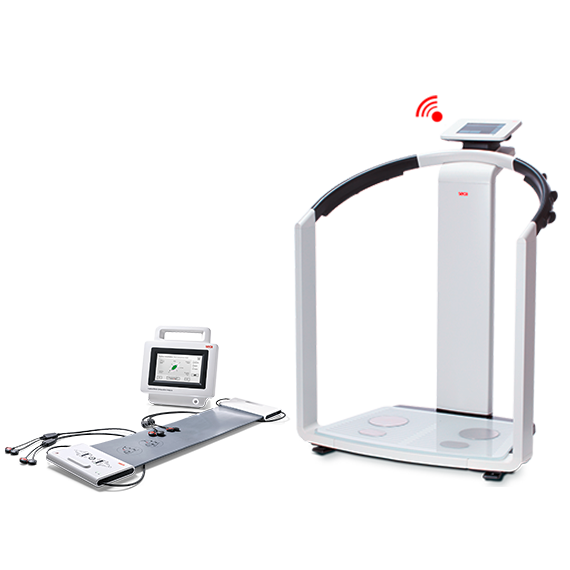Precise results, validated by clinical studies.

Indication Oncology
Many different factors, one major problem: malnutrition.
- Up to 40 % of worldwide cancer patients are malnourished.
- In more than 22 % of tumor patients, cachexia is the immediate cause of death.
Accurate body composition measurement helps to detect cachectic states. Examination results allow to monitor and adapt nutritional state during therapy in order to reduce mortality.
Indication Nephrology
Body water: the right level is crucial.
- Monitoring body water is of high interest.
- Nutritional factors also play a major role.
Kidneys should take in as little protein as possible. On the other hand, too little protein intake can cause cachectic states.
Indication Heart Insufficiency
Vital for the heart: the optimal nutritional treatment.
- Worsened prognosis if a patient’s nutritional status is inadequate as a result of the loss of muscle and fat (cardiac cachexia).
- About 15-20 % of patients with chronic heart failure experience cardiac cachexia.
Diagnosis is difficult as edema may mask the substantial loss of fat and muscle mass. (Extracellular) water has to be taken into account.
Indication Diabetology
Two heavy burdens: overweight and
obesity.
- More than 90 % of diabetics have an acquired type 2 diabetes, mainly caused by poor diet and inactive lifestyle.
A reduction of fat mass while preserving skeletal muscle mass is indicated. Accurate monitoring of fat and muscle mass, especially by means of Body Composition Chart, helps to control therapies.
Reduce fat, maintain muscle
Two values in one easy-to-understand graph: the body composition chart.
- An obese person with adequate activity has – next to an increased fat mass – an increased amount of muscle mass.
- Weight reduction programs often focus on decreasing fat while preserving muscle.
The seca mBCA displays fat mass and fat free mass in one easy to understand graphic: the body composition chart.
Quantify water retention
Only a clear insight gives the definite answer.
- Metabolic, unhealthy persons with insulin resistance often exclusively lose water when commencing with weight reduction.
- The loss of water is often followed by a weight standstill.
The seca mBCA accurately assesses body water over time to evaluate these effects.
Injury and rehabilitation
The key to return to performance - the seca mBCA.
- Assists in closely monitoring changes in body composition during injury.
- Basis for rehabilitation therapy goals.
- Segmental analysis of muscles (arms, legs, trunk) helps to define specific physiotherapy treatment.
- Monitors body composition over time.
Malnutrition assessment
Extensive assessment with the mBCA.
Assessing malnutrition plays an increasingly important role.
- Treatment of at-risk obese patients with precursors for diabetes and arteriosclerosis.
- Treatment of underweight patients with deficiency symptoms.
- Treatment of normal weight patients with reduced muscle mass and metabolic rates.
Edema management
Water is life – but too much is a severe risk factor.
- Evaluating body water is of vital importance in many medical fields. Especially valuable for nephrology, intestinal, hepatorenal and cardiac patients.
- Monitoring total body water, extracellular water and water distribution helps to detect and control edema.
Monitor muscle function
Over 600 muscles – countless areas of application.
- Monitoring muscle function offers various areas of application:
- Diabetology, training management in athletes, rehabilitation, physiotherapy,…
- This is made especially easy by means of the segmental analysis of the extremities: arms, legs and trunk.
- Values are compared to normal ranges.
Phase angle
One quick measurement – two vital answers.
- Provides information on health.
- Helps to detect clinically relevant malnutrition.
- Ideal for monitoring patients with cancer, COPD or chronic heart insufficiency.
- Differential diagnosis indicated for low phase angle values (dependent on age).
